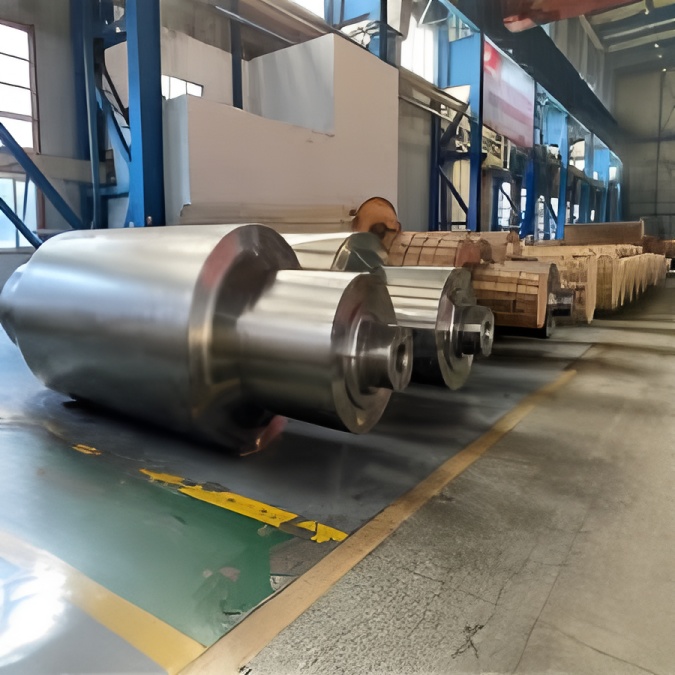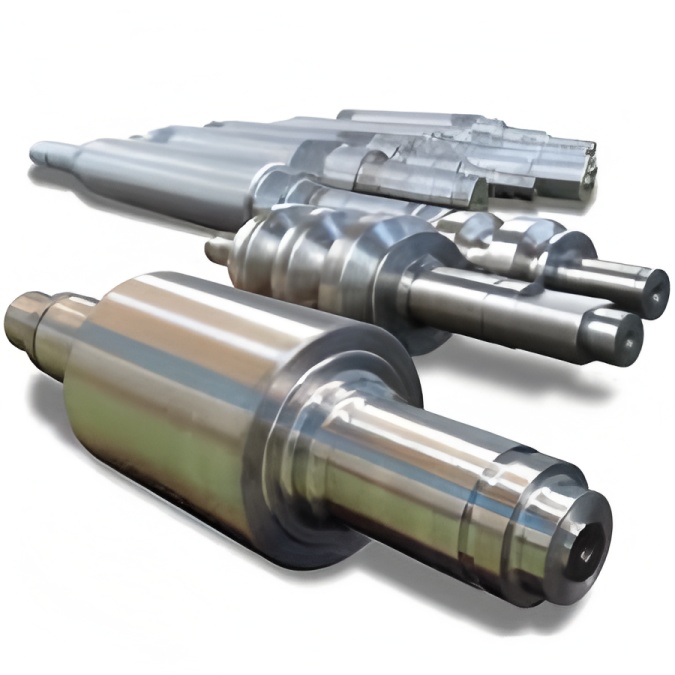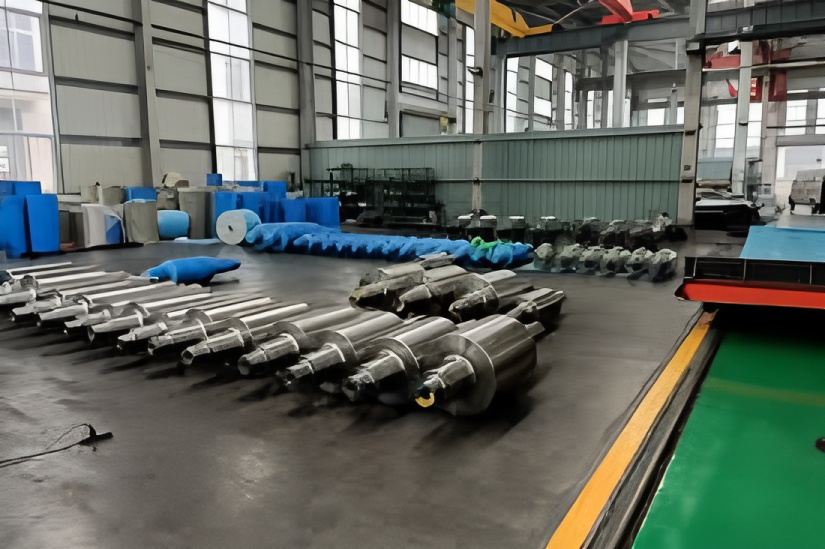Processing Technology and Practical Applications of High-Speed Steel Rolls
The 260 rolling production line at a major Chinese steel mill’s First Rolling Plant primarily produces Φ12–50 mm rebar, mining bolt steel, nuclear power functional steel, and high-speed rail thread finishes. The mill employs a 6-4-7 layout with alternating 1–10 stands, all utilizing continuous tension-free rolling. Originally using ductile indefinite chilled iron and high-Ni-Cr composite chilled iron rolls, the line has fully adopted high-speed steel (HSS) rolls in the finishing train, significantly improving mill operation rate, negative tolerance control, and surface quality. However, the high hardness and difficult machinability of HSS rolls have limited wider application. This article outlines the advantages of HSS rolls, tool selection, processing techniques, machine requirements, and usage practices.
Advantages of High-Speed Steel Rolls
High-carbon HSS composite rolls represent one of the fastest-growing hot-rolling roll materials. The working layer is high-carbon steel, compounded via centrifugal casting or CPC with a nodular iron, graphite steel, or forged steel core. The microstructure consists of tempered martensite/bainite with finely dispersed carbides, offering high wear resistance and toughness but posing machining challenges. Key properties are shown in Table 1.
HSS rolls offer excellent thermal stability, hardenability, high carbide hardness, easy oxide film formation, and superior thermal crack and wear resistance. Their cooling requirements are lower than carbide rolls, and groove life is 4–5 times that of cast iron rolls. They improve dimensional tolerance control and surface quality, especially in slit rolling, pre-cutting, and special pass designs. Alloying typically includes carbide-forming elements like W, Mo, Cr, V, and Nb.
Tool Material Selection
HSS roll machining requires superhard tools due to high cutting pressure, impact, and friction. Diamond and cubic boron nitride (CBN) are common choices. CBN is preferred for its high hardness, thermal stability, chemical inertness, and suitability for ferrous materials. Commonly used grades include MBN3500 and MBN5000.
High Hardness & Wear Resistance: CBN ranks second only to diamond in hardness, making it ideal for HSS rolls.
Strength & Toughness: CBN offers better impact resistance than diamond, which is brittle and unsuitable for iron-based materials.
Heat Resistance: CBN maintains high hardness at elevated temperatures (≈1000°C), ensuring consistent performance.
Thermal Conductivity: Good heat dissipation reduces thermal shock and cracking risks.
Machinability & Economy: CBN tools are versatile for CNC machining and offer cost-effective service life.
A comparison of tool materials is provided in Table 2.
Machining of HSS Rolls
The hard, carbide-strengthened surface of HSS rolls causes high-frequency tool impact and accelerated wear. Strategies include high speed, low cutting depth, and frequent tool changes.
3.1 Groove Machining
Roughing uses a blade smaller than the groove base circle, followed by CBN tools with CNC programming. Typical parameters:
Depth of cut: 0.3–0.4 mm
Cutting speed: 60–80 m/min
Feed rate: 0.8 mm/r (roller ring), 0.3–0.5 mm/r (notch arc), 0.3–0.4 mm/r (groove base)
3.2 Common Issues & Solutions
Dimensional Inaccuracy:
Reduce feed rate or tool compensation for groove base gaps.
Replace inserts for asymmetrical grooves; adjust screw compensation if needed.
Check tool wear and adjust feed or compensation for insufficient depth.
Tool Damage:
Chipping: Minor damage may allow continued use; replace if excessive.
Fracture: Caused by delayed replacement or overload; reduce feed.
Flaking: Adjust cutting speed and feed to avoid mismatch.
3.3 Transverse Rib Milling (e.g., XK500C Mill)
Use fly cutter mills (e.g., XK9350/XK500) with H06 or 6EF-grade cutters. Feed rate: 0.03–0.05 mm/r. Frequently check and replace worn tools. For logos, use Φ8–10 mm rod tools in swing-head mode, with depth and spacing set in the program.
Roll Clamping & Machine Requirements
Employ four-jaw chucks or transition sleeves with tailstock support. Custom umbrella-shaped centers suit screw-threaded roll ends. Machine tools must be rigid to minimize vibration. Use large tool holders and auxiliary supports for long tools. On fly cutter mills, maintain minimal clearance between support blocks and cutter bars to prevent breakage.
Usage of HSS Rolls
Cooling is critical: use clean, low-temperature water (≤40°C) at 0.4–0.6 MPa pressure and 300–500 L/min flow, with 70–80% directed to the exit side. Multi-nozzle ring cooling (Figure 3) ensures uniform groove coverage. Pre-cool rolls before contacting hot steel. In cobbling incidents, continue cooling before handling. If groove temperature exceeds 60°C post-incident, skip two grooves before resuming.
Conclusion
HSS rolls offer superior hardness and wear resistance, doubling groove life and enhancing surface quality and dimensional precision compared to chilled iron or high-Ni-Cr rolls. While CBN tooling remains a bottleneck, ongoing material advances and optimized processing—supported by rigid machinery and proper cooling—will broaden HSS roll applications, driving further gains in rolling efficiency and product quality.



